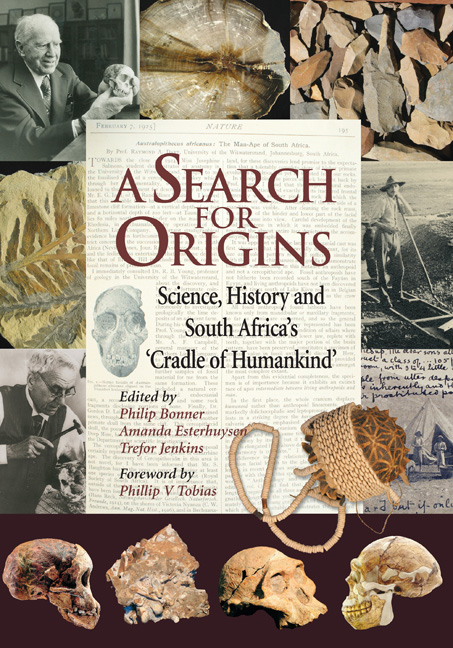Book contents
- Frontmatter
- Contents
- Map
- Foreword
- PART 1 Introduction: Africa is Seldom What It Seems
- PART 2 Introduction: Fossils and Genes: A New Anthropology of Evolution
- PART 3 Introduction: The Emerging Stone Age
- PART 4 Introduction: The Myth of the Vacant Land
- PART 5 Introduction: The Racial Paradox: Sterkfontein, Smuts and Segregation
- Epilogue: Voice of Politics, Voice of Science: Politics and Science After 1945
- Notes, references and recommended reading
- Notes on contributors
- Acknowledgements
- Index
PART 3 - Introduction: The Emerging Stone Age
Published online by Cambridge University Press: 31 May 2019
- Frontmatter
- Contents
- Map
- Foreword
- PART 1 Introduction: Africa is Seldom What It Seems
- PART 2 Introduction: Fossils and Genes: A New Anthropology of Evolution
- PART 3 Introduction: The Emerging Stone Age
- PART 4 Introduction: The Myth of the Vacant Land
- PART 5 Introduction: The Racial Paradox: Sterkfontein, Smuts and Segregation
- Epilogue: Voice of Politics, Voice of Science: Politics and Science After 1945
- Notes, references and recommended reading
- Notes on contributors
- Acknowledgements
- Index
Summary
As with the emergence of palaeoanthropology, palaeolithic archaeology or the archaeology of the Earlier Stone Age would only truly take hold within the context of the ‘evolutionary’ or ‘prehistoric’ fervour of the 1850s. Prior to this, strong creationist opinion generally destroyed, silenced or dismissed studies of stone tools. For example, in the 1600s Isaac de la Peyrère published a study on chipped stones found in the French countryside in which he suggested that primitive humans who lived before Adam had worked on the stones. His book was burnt publicly in 1655 (Howell 1966: 10). During the late 1700s John Frere, an English country squire, discovered a number of stone tools in the same stratified layer of earth as the bones of long-extinct animals. From this he concluded that the tools dated to a remote period, possibly ‘beyond that of the present world’ (Frere 1800, cited in Proctor 2003: 216). His published findings went unnoticed. As more and more deposits containing tools and extinct animals were exposed and could no longer be ignored, explanations were proffered that were acceptable within a slightly more accommodating biblical framework. Jacques Boucher de Perthes, for instance, collected and organised a number of finds from canal and railway excavations in northern France that provided good stratigraphic information. Convinced that the extinct animals and tools belonged to the same period, he argued that they provided evidence of a human race that had been destroyed by a flood which had occurred prior to the creation of Adam and Eve.Many palaeontologists of the early 1800s were biblical catastrophists of this kind (Trigger 1989: 90–91).
By the 1860s the work of Charles Lyell, Charles Darwin and Thomas Huxley had created a new view of the world and of the antiquity of humans. Although their ideas were still resisted in many quarters, they provided the impetus for the development of Earlier Stone Age studies. John Lubbock, an English banker and naturalist, gave the field of study a name when he divided the Stone Age into earlier and later periods, the Palaeolithic and the Neolithic. However, the initial advances in the Palaeolithic took place in France (Trigger 1989: 94–95).
- Type
- Chapter
- Information
- A Search for OriginsScience, History and South Africa's ‘Cradle of Humankind’, pp. 103 - 109Publisher: Wits University PressPrint publication year: 2007



